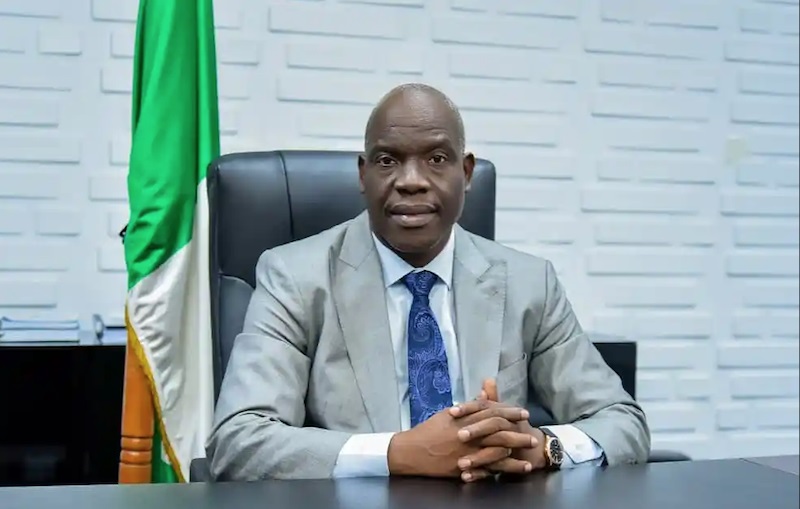
We were meeting in my coaching studio—a serene space in the heart of Ikoyi. The scent of cedarwood lingered in the air, and the soft hum of ambient music offered a gentle backdrop. Angela walked in, smiled, and sat down. But the smile didn’t quite reach her eyes.
“I’m terrified,” she said flatly, after our initial pleasantries. “I can lead meetings, manage teams, even negotiate with vendors across the world. But ask me to speak in front of a crowd—especially with a mic in my hand—and something shuts down.” She paused. I could see her eyes begin to shimmer, as if the very act of naming the fear made it real again.
“I got asked to give a keynote at our global leadership summit,” she said. “My boss thinks it’s a big opportunity. But I’m seriously thinking about turning it down.”
That’s when I knew this wasn’t just about public speaking. It was about identity. Visibility. Power. And the internal permission to take up space—not just in the room, but in the world.
Over the next few sessions, we unpacked Angela’s relationship with visibility. What I discovered was a deeply ingrained fear, rooted not in lack of ability, but in old stories—narratives built on moments of shame and silence.
Her fear didn’t start in the boardroom. It started in the classroom. In JSS 1, she had to recite a poem in front of her class. She forgot the lines halfway through. Her teacher, impatient and dismissive, had said, “Sit down if you’re not prepared.” The class had laughed. She remembered the sound of it in her bones. That was the moment her nervous system learned: speaking up leads to pain. Visibility invites ridicule.
Now, twenty years later, her body still remembered. Each time she was asked to speak publicly, her breath would shallow. Her hands would sweat. Her voice would tremble. Her brain would go blank. And above all, a voice in her head whispered: “Don’t mess this up again.”
This was not a skill issue. It was a trauma loop. Helping Angela required more than presentation tips. She needed a safe space to rewire her relationship with speaking—and with herself. Here’s the step-by-step methodology I used to guide her transformation:
Step 1: Normalize the Fear
First, I validated the fear. I told her something I tell many of my clients:
“Public speaking is not just about delivering information—it’s about being seen. And for many of us, being seen hasn’t always been safe.”
Angela wept when I said that. It unlocked something. For the first time, she saw her fear not as a flaw, but as a response. That shift—from shame to understanding—was our first win.
Step 2: Identify the Inner Narrator
I guided Angela through a journaling exercise:
“What does the voice in your head say when you imagine speaking on stage?”
She wrote:
• “You’re going to embarrass yourself.”
• “They’re going to see you don’t belong.”
• “You’ll freeze, and it’ll be a disaster.”
I call this voice The Inner Narrator—a subconscious script shaped by past experiences. Our work was to challenge, question, and rewrite it.
We spent time re-authoring her internal script, changing “I will embarrass myself” to “I will breathe, I will connect, and I will grow.” Repetition, visualization, and vocal affirmation helped her embody the new message.
Step 3: Reconnect with the Body
Angela’s fear lived in her body, not just her mind. So we incorporated somatic coaching into our sessions:
a) Breathwork: We practiced box breathing to regulate her nervous system.
b) Grounding exercises: Standing barefoot, feeling her weight supported by the ground.
c) Voice release: Simple vocal warmups to reconnect her with the power of her own sound.
One powerful moment came when I asked her to repeat her keynote’s opening line while pressing her feet into the floor and expanding her arms wide. For the first time, her voice didn’t quiver. It filled the room.
Step 4: Controlled Exposure
Rather than jumping straight to the stage, we created a ladder of low-stakes visibility:
a) Practice speaking in front of a mirror.
b) Record a video of herself delivering a message—and watch it with compassion.
c) Present a short message to me in session.
d) Practice in front of a trusted friend.
e) Speak for 2 minutes at a team meeting.
Each step was a win. Each one rewrote the old story in her nervous system. Safety replaced shame. Confidence replaced dread.
Step 5: Own the Message
We reframed the keynote not as a performance, but as a gift.
I asked her:
“If this audience truly needed to hear one thing from you—heart to heart—what would it be?”
That changed everything. She crafted a story about her journey, the power of persistence, and how leaders grow through discomfort. She practiced telling it—not to impress—but to connect.
And that became her anchor.
She wasn’t speaking for approval. She was speaking for impact.
Visit www.tppafrica.com for the full article
Are you ready to take your leadership to the next level? Contact us today on +2347026668008 or [email protected]






